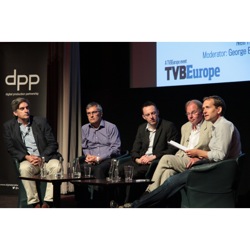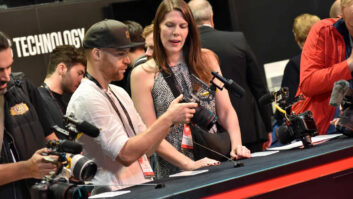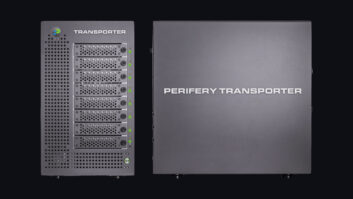
The fifth IT Broadcast Workflow conference, organised by TVBEurope, was the most stimulating and informative to date. Through a programme of case studies and expert opinion it looked at the state of play in file-based broadcast architectures.
Frequently the discussion returned to the economics of the transition, and the importance of understanding where costs lie and where they could be managed. In his opening remarks, conference chair Jeremy Bancroft of Media Asset Capital said that, in his consultancy work around the world, one of the most striking things he found was that “no single organisation we have worked with understood their cost model; they did not know how long it took to transmit an hour’s television”.
Others pointed to a migration in costs. Post production consultant Neil Hatton (pictured, second from left), stressed the need to change the common perception that storage in the file-based world costs nothing. High shooting ratios and the option to have many more cameras – it is simple and inexpensive to put out a few GoPros, for example – mean that an hour’s programming might have 100 hours or more of raw material.
As well as budgeting for storage, producers also need to budget for data wrangling, too. Again, in the early days of file-based acquisition the suggestion was that the camera operator would back up data at the end of the day. Now we are understanding that it needs to be more structured than that.
But alongside these messages, Irish broadcaster RTÉ pointed to positive commercial gains. It had held back moving its channels to HD, for example, because the cost of investing in VTRs was prohibitive. Now it has implemented its FAST asset management project, it has stated it will never need to buy another VTR. And it is anticipating annual operational savings of €400k – a quantifiable return on investment.
That was the over-arching message of the 2013 IT Broadcast Workflow conference: the use of new technology to allow everyone to work in better ways and thereby achieve economies. As Andy Tennant (pictured, third from left), of ITV in the UK said, “we now have to get over the line and say we have to get file delivery. As broadcasters we cannot put the maximum amount of money on screen if we are still having to paddle beneath the surface to manage different inputs.”







